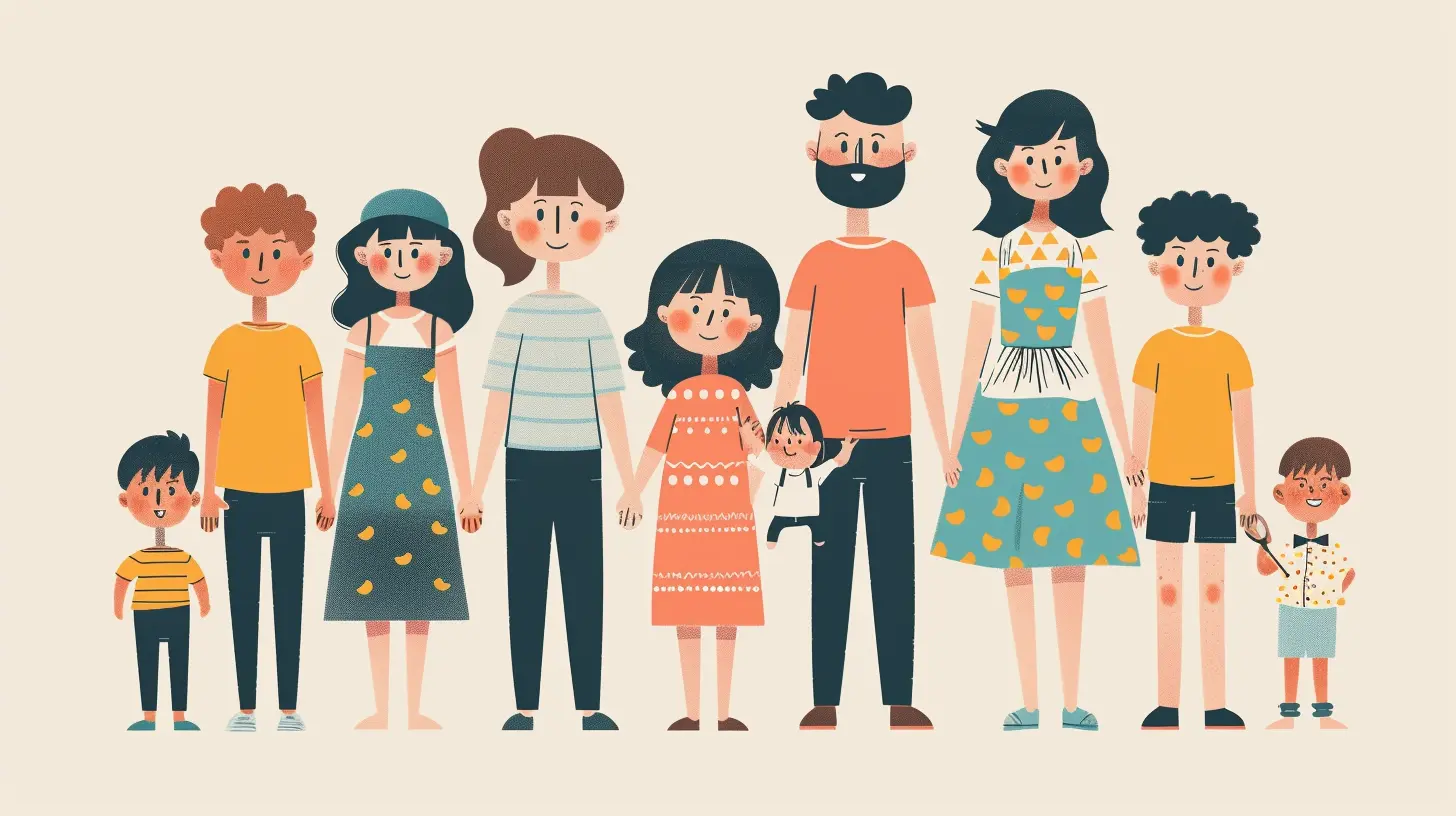9 April 2025
Blended families are like a big, colorful quilt—each patch is unique, but together, they create something warm and beautiful. However, adjusting to new family dynamics can be tricky, especially for kids. They're suddenly sharing their space, time, and sometimes even their parents with people they didn't grow up with.
So, how do we help our little ones embrace these differences and see them as strengths rather than obstacles? Let's dive into some fun and practical ways to teach kids acceptance in a blended family! 
Understanding Differences in a Blended Family
Blended families bring together people with different traditions, backgrounds, habits, and ways of doing things. One sibling might love quiet time with a book, while another thrives on loud wrestling matches in the living room. These differences can sometimes lead to misunderstandings, but when handled well, they can also create a family environment rich in diversity and learning.So, instead of seeing these differences as roadblocks, let's help our kids view them as opportunities to grow and expand their world. 
Encouraging Open Conversations
One of the best ways to help kids accept family differences is by talking about them openly. Kids may have a lot of feelings—confusion, frustration, excitement—about their new family setup. When they feel safe expressing their emotions, it becomes easier for them to process and embrace changes.How to Encourage Open Communication:
✔ Create a judgment-free zone: Let kids express their concerns without fear of punishment or dismissal. Even if you don’t agree, acknowledge their feelings.✔ Ask open-ended questions: Instead of a simple "How was your day?" try "What was something interesting you noticed about your step-sibling today?"
✔ Use storytelling: Reading books or sharing stories about other blended families can help them see they’re not alone.

Promoting Empathy Through Perspective-Shifting
Empathy is the magic ingredient that turns misunderstandings into connections. Teach kids to put themselves in their step-sibling’s shoes—understanding how they feel and why they act in certain ways.Fun Ways to Build Empathy:
🎭 Role-switching games: Have kids act out each other’s daily routines to see things from a different perspective.📖 "What Would You Do?" scenarios: Give them situations (e.g., "Your step-sibling is upset because they miss their old home. How would you help?") and discuss solutions.
📝 Feelings journal: Encourage kids to jot down their thoughts daily to better understand and express emotions.

Celebrating Differences Instead of Resisting Them
Imagine how boring life would be if we were all the same! Differences make families exciting and full of surprises. Instead of seeing them as barriers, help your kids appreciate them as assets.Ways to Celebrate Differences in a Blended Family:
🎉 Create a "family culture day": Every week, let a different family member pick a tradition or activity they love and teach the rest of the family about it.🍽 Food fusion nights: Cook meals from different cultural backgrounds represented in your home. Learning through food is always a hit!
🎶 Music sharing: Have a jam session where everyone shares their favorite songs—who knows, they might end up bonding over a shared love for a cheesy 80s hit!
Setting House Rules That Respect Everyone
A fair and balanced set of house rules helps prevent conflicts. Kids might struggle to understand why different family members have different rules. Setting clear and consistent expectations ensures that everyone feels respected and understood.Tips for Creating Family Rules:
📌 Hold a "family meeting": Let everyone contribute to the discussion on what rules should be in place.🛑 Make fairness a priority: Explain why rules may slightly differ for different age groups, but emphasize that fairness is key.
🎯 Post the rules somewhere visible: A fun family rules board in the kitchen can serve as a daily reminder.
Leading by Example
Kids learn more from what we do than from what we say. If they see us embracing differences with kindness and patience, they'll follow suit.How to Model Acceptance:
✔ Speak positively about differences: Avoid negative comparisons. Instead of "Why can’t you be more organized like your step-brother?" say, "Everyone has their own strengths!"✔ Practice inclusivity: Make sure no one in the family feels left out—whether it’s during movie nights or car trips.
✔ Show gratitude for each family member: A simple "I love how creative you are" can work wonders in making a child feel valued.
The Power of Team-Building Activities
When kids work together towards a common goal, they start to see each other as teammates rather than competitors.Great Family Bonding Ideas:
🎨 DIY family crest: Design a unique family coat of arms that represents each member’s personality.🧩 Puzzle or board game night: Friendly competition can create laughter and teamwork.
🏕 Camping trip or backyard picnic: Shared experiences create lasting bonds.
Handling Conflict with Patience and Positivity
No family—blended or not—is without disagreements! But how we handle conflicts teaches kids invaluable life skills.Conflict Resolution Tips:
✔ Teach "pause and breathe": Before reacting in anger, take a deep breath to think before you speak.✔ Use "I" statements: Instead of "You always take my stuff!" encourage "I feel upset when my things are taken without asking."
✔ Encourage apologies and forgiveness: Holding onto grudges only creates more division. Teaching kids to say "I’m sorry" and truly mean it is priceless.
Accepting That It Takes Time
Adjusting to a blended family is a journey, not a sprint. Some days will be easier than others, and that’s okay! The key is to continue fostering an environment of love, patience, and understanding.When kids learn that differences aren’t something to fear but something to embrace, they’ll grow into kinder, more accepting individuals—not just within the family but in the world around them.
So, let’s celebrate the quirks, treasure the differences, and build a blended family that’s strong, resilient, and full of love!





Isabella McCool
Blended families: where sharing snacks is easier than sharing parents!
April 13, 2025 at 4:04 AM